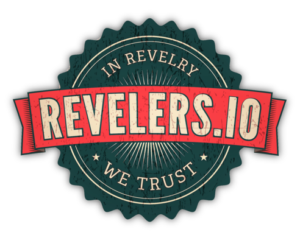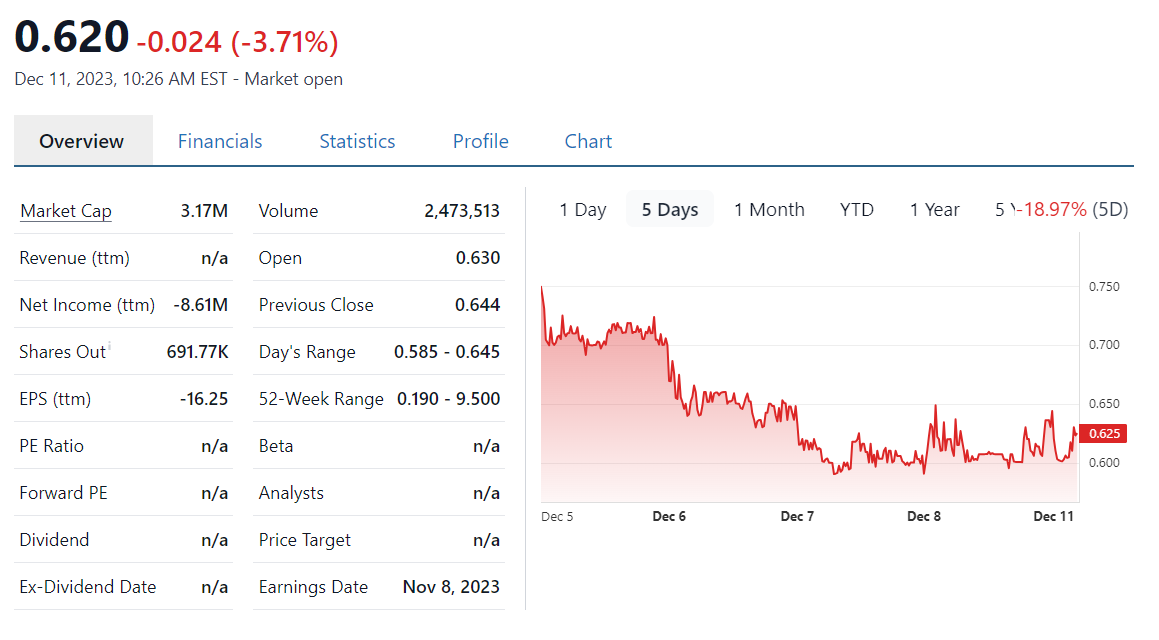Tharimmune Announces Positive Topline Data with TH104, its Lead Candidate for Moderate-to-Severe Pruritus in Chronic Liver Disease Patients
Phase 1 ex-US trial in chronic liver disease patients in an open-label study showed a 33.3% decrease in 24-hour mean itching intensity score after a single dose
TH104 was well tolerated with no unexpected treatment-emergent adverse events comparable to previous phase 1 studies
Company funded into early 2025 and expects bridging PK data in the US and Phase 2a results for chronic pruritus in primary biliary cholangitis (PBC) in 2024

RELATED: Tharimmune, Inc. Announces Closing of $11 Million Public Offering
BRIDGEWATER, NJ / ACCESSWIRE / December 11, 2023 / Tharimmune, Inc. (Nasdaq:THAR) (“Tharimmune” or the “Company”), a clinical-stage biotechnology company developing a portfolio of therapeutic candidates for rare, inflammatory, and oncologic conditions announces positive phase 1 data with TH104, a proprietary transmucosal buccal film which easily adheres to the inside of the mouth. The Phase 1 trial was a single-dose, single-center, open-label, randomized, study of TH104 transmucosal buccal film conducted in India in two different cohorts. The primary outcome measure was to determine the safety and tolerability of a buccal dose of TH104 in chronic liver disease patients, while a secondary objective included establishing its’ response for clinical efficacy studies for pruritus or “debilitating itching” using a validated endpoint, the Worst Itch-Numerical Rating Scale (WI-NRS).
This study enrolled 2 types of chronic liver disease patients including subjects with cholestatic liver disease categorized as Child-Pugh A (Cohort A) and cholestatic liver disease categorized as Child-Pugh B (Cohort B). The Child-Pugh score is a system for assessing the prognosis and necessity of transplant in chronic liver disease. It provides a forecast of the increasing severity of a patient’s liver disease and expected survival rate. The score is determined by scoring clinical measures of liver disease and the possibility of eventual liver failure. Class A refers to the least severe liver disease with a one to five-year survival rate of 95% and Class B refers to moderately severe liver disease with a one to five-year survival rate of 75%. There were no patients in this study enrolled with a very severe Child-Pugh C classification.


Pruritus is a common clinical feature seen in most liver diseases but particularly frequently in cholestatic liver disease. The WI-NRS is a validated numerical rating scale with 11 numbers anchored at 0 representing “no itch” to 10 representing “worst imaginable itch” which are displayed, and patients are asked to pick the number corresponding to the intensity of their pruritus. Results from multiple large studies support the usefulness and validity of WI-NRS for evaluating change over time in the clinical trial setting. This study incorporated this relevant clinical outcome assessment for pruritus in chronic liver disease patients administered one 2 mg dose of TH104 applied as a transmucosal buccal film and assessed patient itch intensity over a 24-hour period.
A total of 12 cholestatic liver disease patients with a known history of persistent chronic pruritus for at least 4 weeks prior to screening were randomized in this study with 6 subjects each in Cohorts A and B. The mean baseline WI-NRS scores in Groups A and B were 4.33 and 6.17, respectively, translating to moderate-to-severe chronic pruritus at the start of the study. The mean baseline itch score for all 12 subjects was 5.25. At 1-hour post dosing with TH104, Group A and Group B had a mean decline in WI-NRS scores by 26.8% and 19.0% and continuing to decline 2-hours post-dose by 42.3% and 21.7%, respectively. All 12 subjects had a mean decline of 30.1% in WI-NRS scores at 1-hour and 2-hours post-dose. Both Cohorts continued to improve in mean itch scores at the 4-hour and 8-hour time points including the combined total subjects. At 24-hours post dosing, Group A and Group B achieved a mean decline of 30.7% and 35.2%, respectively in pruritus scores. All 12 subjects had a mean decline of 33.3% in itch scores after a single dose at 24-hours post dosing of TH104.
There were no deaths, other serious adverse events, or other significant adverse events reported during the entire study. There were no new adverse events during the entire study with events correlated with previous studies and a safety profile consistent in the literature with nalmefene, the active ingredient in TH104. Further analysis including bioanalytical, pharmacokinetic, biomarker, safety and tolerability are currently ongoing, and the Company plans to announce the full data set in 1Q24.
“We are pleased with the totality of the Phase 1 data with TH104 where previously we showed reliable and predictable delivery of nalmefene using our proprietary microparticle embedded transmucosal delivery system which can easily be applied to the inside of the cheek in seconds in healthy volunteers,” said Randy Milby, CEO of Tharimmune. “The topline information announced today in liver disease patients dealing with unrelenting itching can be helped with TH104 even after one dose, further strengthens our confidence in developing this important therapy for those suffering from this condition.”
The Company intends to provide topline data in 2024 for a phase 1 pharmacokinetic bridging study in the United States designed as a single-dose, single-center, open-label, randomized 2-way crossover study of TH104 transmucosal buccal film and an intravenous dose of drug administered under fasting conditions, with a 7-day washout period between doses. Sixteen normal healthy volunteers will participate in the study. The primary objective is to evaluate the absolute bioavailability of TH104 as well as assess safety and tolerability of the formulation. The Company plans to engage the US and EU Regulatory Authorities and expects to launch a 28-day Phase 2a trial in the coming months which is currently planned as a multiple ascending dose trial to assess the safety and tolerability of TH104 which will also assess the change from baseline in WI-NRS to evaluate chronic pruritus in PBC patients, with a topline data readout expected in 4Q24.
About TH104
TH104 is embedded with nalmefene onto a proprietary transdermal buccal film which easily adheres to the inside of the mouth. This endows TH104 with key features making it an ideal product candidate for multiple liver-related and other pruritogenic inflammatory conditions. The molecule has a dual mechanism of action affecting both the µ-opioid receptor and the kappa opioid receptor as well as inhibiting IL-17 inflammatory cytokine expression. These opioid receptors when stimulated and/or inhibited by the body’s natural ligands have been known to be involved in the body’s itch circuitry.
About Pruritus and Primary Biliary Cholangitis
According to the National Institute of Diabetes and Digestive and Kidney Diseases (NIDDK), part of the National Institutes of Health, PBC, is a chronic disease where the bile ducts in the liver eventually become dysfunctional and cause the buildup of bile which causes liver damage. The disease, believed to be an autoimmune condition, affects an estimated 58 out of every 100,000 U.S. women and about 15 out of every 100,000 U.S. men. Pruritus is one of the most common conditions associated with PBC affecting up to 75% of individuals at some point during their disease course. It has a negative impact on health-related quality of life with limited treatment options.Published survey data of PBC respondents suffering from pruritus described their itch as “bugs crawling under the skin”. More than 65% of patients reported that the itch was worse at night, known as nocturnal pruritus, a high unmet need.
Sign up for news updates on Tharimmune

About Tharimmune
Tharimmune, Inc. is a clinical-stage biotechnology company developing a portfolio of therapeutic candidates for rare, inflammatory, and oncologic diseases. The Company has acquired an exclusive worldwide license for a clinical-stage asset, known to suppress chronic, debilitating pruritus or “uncontrollable itching” in PBC, a rare and orphan liver disease with no known cure. The Company’s early-stage immuno-oncology pipeline includes novel multi-specific antibodies targeting unique epitopes with novel mechanisms of action against well-known, validated targets in multiple solid tumors. Tharimmune has a license agreement with OmniAb, Inc. to access the company’s antibody discovery technology platform against specified targets. For more information please visit: www.tharimmune.com.
Forward Looking Statements
Certain statements in this press release are forward-looking within the meaning of the Private Securities Litigation Reform Act of 1995. All statements, other than statements of historical facts, contained in this press release, including statements regarding Tharimmune’s strategy, future operations, future financial position, projected costs, prospects, plans and objectives of management, are forward-looking statements. The words “anticipate,” “believe,” “continue,” “could,” “depends,” “estimate,” “expect,” “intend,” “may,” “ongoing,” “plan,” “potential,” “predict,” “project,” “target,” “should,” “will,” “would,” and similar expressions are intended to identify forward-looking statements, although not all forward-looking statements contain these identifying words. The Company may not actually achieve the plans, intentions, or expectations disclosed in these forward-looking statements, and you should not place undue reliance on these forward-looking statements. Actual results or events could differ materially from the plans, intentions and expectations disclosed in these forward-looking statements. Factors that may cause such differences, include, but are not limited to, those discussed under Risk Factors set forth in our Annual Report on Form 10-K/A for the year ended December 31, 2022 and other periodic reports filed by the Company from time to time with the Securities and Exchange Commission. In addition, the forward-looking statements included in this press release represent the Company’s views as of the date of this release. Subsequent events and developments may cause the Company’s views to change; however, the Company does not undertake and specifically disclaims any obligation to update or revise any forward-looking statements to reflect new information, future events or circumstances or to reflect the occurrences of unanticipated events, except as may be required by applicable law. These forward-looking statements should not be relied upon as representing the Company’s views as of any date subsequent to the date of this release.
Investor Relations Contact
[email protected]
www.tharimmune.com
SOURCE: Tharimmune, Inc.












